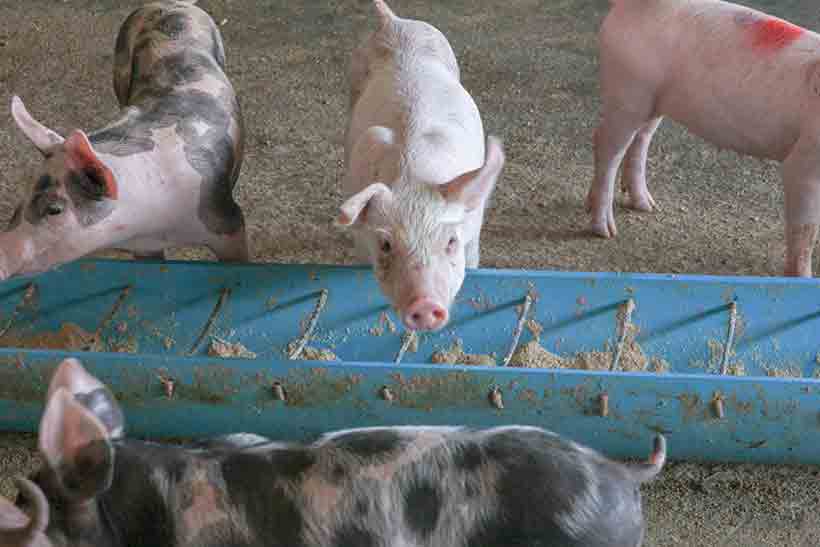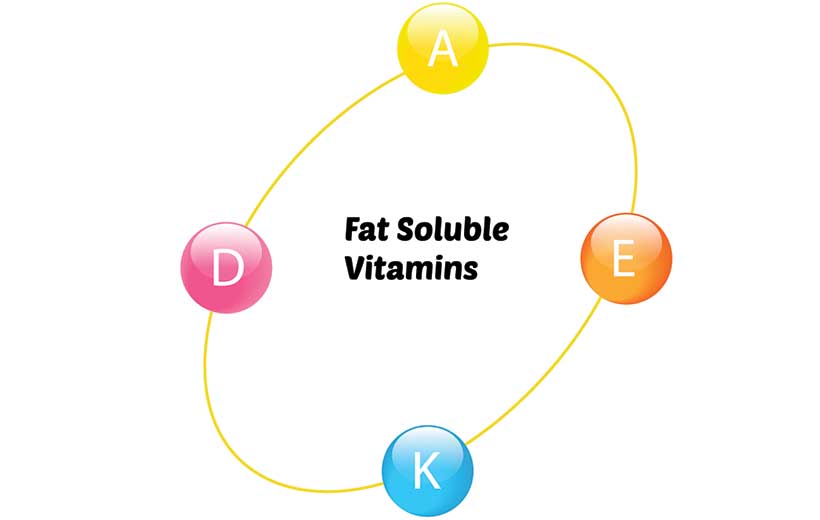 There are lots of facts and myths about skim milk, which is a type of milk with the fat removed.
There are lots of facts and myths about skim milk, which is a type of milk with the fat removed.
While some people claim it is lower in “harmful” saturated fat, others feel that dairy fat is perfectly healthy.
On the other hand, some people have concerns about skim milk’s higher level of processing.
This article takes a balanced look at the nutrition profile, health benefits, concerns, and scientific research on skim milk.
What Is Skim Milk?
Skim milk is simply milk that has had most of the butterfat removed and some vitamins added by fortification.
We will examine the full nutritional content a little later on, but skim milk usually has between 0% and 0.1% fat content.
Depending on where you live, you may know this type of milk by different names:
- Skim Milk (American English)
- Skimmed Milk (British English): This milk typically comes in red packaging or has a ‘red top.’
It is also common to hear people call it ‘non-fat’ or ‘fat-free’ milk.
The main difference in the nutrition profile of whole milk and skim milk is the calories and fat content.
As skim milk contains no fat, the total amount of calories (1 gram of fat = 9 calories) is much lower.
How is Skim Milk Made?
To make skim milk, producers use a centrifugal separator to remove the fat globules from the milk.
Centrifugal separators operate by spinning the milk at extremely high forces.
During this process, the milk and the fat separate and run off into two spouts leading to different containers within the centrifuge. In these containers, the milk awaits collection.
To learn more about the production process, there is a useful resource here.
Skim Milk’s History
Interestingly, skim milk started life as a “fattening” supplement for pigs.
Farmers added it to grain-based pig feed to make the food more palatable and to encourage the swine to eat more (1).
Over the past few decades, skim milk became a desirable alternative to whole milk as consumers sought low-fat options.
The US Department of Agriculture (USDA) played a big part in this when they introduced reasonably low-fat dietary guidelines in 1980.
Following this, whole milk consumption began to fall at the expense of low-fat options.
The rise in skim milk gathered pace when the USDA then recommended the population switch to low-fat dairy for the first time in 1985 (2).
However, in recent times, the fear of dietary fat is slowly subsiding, and skim milk sales have begun to fall.
This interesting chart shows how milk sales have changed over the past few decades (3);
Nutrition Facts
Aside from a lower fat and calorie content, skim milk has a similar nutritional profile to whole milk.
The table below shows the basic nutrition profile of skim milk per 100 ml and per 237 ml cup (4):
| Calories/Nutrient | Per 100 ml | Per Cup |
|---|---|---|
| Calories | 34 kcal | 83.3 kcal |
| Carbohydrate | 5.0 g | 12.2 g |
| Fiber | 0 g | 0 g |
| Sugars | 5.0 g | 12.5 g |
| Fat | 0.1 g | 0.2 g |
| Saturated Fat | 0.06 g | 0.14 g |
| Monounsaturated Fat | 0.02 g | 0.05 g |
| Polyunsaturated Fat | <0.01 g | <0.01 g |
| Protein | 3.4 g | 8.3 g |
Skim milk contains around 5 grams of carbohydrate per 100 ml, and this comes in the form of the milk sugar lactose.
Similar to all dairy foods, skim milk contains every essential amino acid in sufficient amounts to be considered a complete protein.
Vitamins
| Vitamin | Per 100 ml (% DV) | Per cup (% DV) |
|---|---|---|
| Vitamin B12 | 20.8 % | 49.4 % |
| Vitamin B2 | 13.8 % | 32.8 % |
| Vitamin B5 | 7.2 % | 17.1 % |
| Vitamin A | 6.8 % | 16.1 % |
| Vitamin D | 5.9 % | 13.9 % |
| Vitamin B1 | 4.2 % | 9.9 % |
| Vitamin B6 | 2.4 % | 5.6 % |
| Folate | 1.3 % | 3.0 % |
| Choline | 2.8 % | 6.7 % |
The vitamin profile of skim milk is similar to regular milk.
However, there is one key difference.
Skim milk is fortified with vitamins A and D. This vitamin fortification is necessary because milk loses its natural fat-soluble vitamin content when the fat is removed (5).
Minerals
| Mineral | Per 100 ml (% DV) | Per cup (% DV) |
|---|---|---|
| Calcium | 9.4 % | 22.2 % |
| Phosphorus | 8.1 % | 19.1 % |
| Potassium | 3.3 % | 7.9 % |
| Selenium | 5.6 % | 13.4 % |
| Magnesium | 2.6 % | 6.2 % |
| Zinc | 3.8 % | 9.0 % |
| Sodium | 1.8 % | 4.3 % |
| Copper | 1.1 % | 2.6 % |
As shown in the table, skim milk is an excellent source of dietary calcium, and it provides a decent amount of several minerals.
What Health Benefits Does Skim Milk Have?
There are two main benefits of skim milk; protein and calcium content.
Of course, all milk is a good source of calcium, and so this isn’t a unique point, but skim milk does have the best protein density.
Protein Density
Since it is much lower in total calories, skim milk has a higher protein density than other milk options.
For instance, 100 grams of skim milk contains 34 calories and 3.4 grams of protein.
One gram of protein is equal to 4 calories, so there is a total of 13.6 calories from protein per 100 grams.
These ratios give a protein density of 40%.
In contrast, whole milk contains the same amount of protein, but the same serving size provides around 60 calories of energy.
As a result, whole milk has a protein density of only 22.7%.
With this in mind, skim milk is the better option if someone is looking to increase their protein intake while adding a minimal amount of calories.
Calcium Content
Just like whole milk, cheese, and most dairy foods, skim milk contains a high amount of calcium.
Some of calcium’s benefits include;
- Helping with the formation, growth, and repair of bone. This is particularly important as we age to retain bone mass and as a preventive measure against osteoporosis (5).
- Higher calcium intake is also associated with a decreased risk of colon cancer. Bear in mind this is an association from observational studies and not proven. However, a recent meta-analysis of randomized trials found that “there is high-quality evidence suggesting a modest overall risk reduction” (6, 7).
Concerns About Skim Milk
While skim milk has a couple of benefits, some people express concerns about it too.
These concerns include the loss of natural fat-soluble vitamins, potential differences compared to whole milk regarding blood sugar response, and the taste.
1. Fat-Soluble Vitamins
Whole milk contains a range of naturally occurring fat-soluble vitamins and these include;
- Vitamin D: Whole milk is one of the few natural dietary sources of vitamin D.
- Vitamin E: This doesn’t get mentioned a lot, but whole milk also contains a small amount of tocopherol (vitamin E), which is lost to the production of skim milk. However, milk only contains minimal levels of the vitamin (10).
There is just one problem; all these vitamins are fat-soluble.
When the manufacturing process removes the fat from skim milk, it also loses the majority of these vitamins.
Manufacturers fortify skim milk with synthetic vitamin A and D to make up for this loss.
However, it is worth noting that fortification is not mandatory. While the majority of producers fortify their skim milk, some do not.
Typical Vitamin A Content of Non-Fortified Skim Milk
A recent study analyzed 30 paired samples of whole milk and non-fortified skim milk to test their vitamin A contribution toward the RDA (11).
On average, the skim milk in this study contributed 1.3% of the RDA for vitamin A per 244 ml serving.
In contrast, whole milk offered a 7.6% contribution – almost 600% more vitamin A per serving.
Can We Absorb Vitamin A In Skim Milk?
There is a popular belief that we may not be able to absorb (fat-soluble) vitamin A in fat-free skim milk.
However, these claims do not appear to be well supported.
For instance, one controlled study compared the bio-availability of vitamin A in whole milk and fortified skim milk (12).
In this study, 19 volunteers consumed 430 ml of each milk on different days, and researchers took their plasma (blood) levels of vitamin A for 6.5 hours after the drink.
The results showed no difference in the relative absorption of vitamin A between each drink.
2. Blood Sugar Response
Skim milk contains the same amount of lactose as whole milk. However, this milk sugar contributes a much higher percentage of total energy.
Earlier, we looked at how skim milk is more protein-dense than whole milk due to the lower calorie count.
In this regard, skim milk also has a much higher milk sugar (lactose) density than whole milk does.
While whole milk provides approximately 33% of calories from sugar, this figure rises to 57% in skim milk.
Could This Cause Any Negative Effects?
Is it possible that higher sugar density could cause problems?
One popular theory is that the lactose could have a more significant impact on postprandial (post-meal) blood sugar levels. This idea revolves around the lack of dairy fat that would otherwise slow digestion.
However, according to recent studies, this doesn’t appear to be the case.
A study conducted by Loren Cordain, among others, showed that there were no significant differences between skim and whole milk consumption on the glycemic and insulinemic response (13).
Another recent controlled trial also compared the glycemic and insulinemic responses of various milk beverages consumed alongside a breakfast meal (14).
However, again, there were no differences between the skim and whole milk.
3. The Taste
Skim milk doesn’t taste as good as whole milk, and it has a more watery mouthfeel.
While some people may prefer it, they would be in the minority.
Is Skim Milk Healthier Than Whole Milk?
Now that we have analyzed some of the pros and cons of skim milk, the big question: how does it compare to whole milk in studies on human health?
Before we take a look at the studies, the table below summarizes the basic nutritional differences between the two (4, 15):
| Calories/Nutrient | Whole Milk | Skim Milk |
|---|---|---|
| Calories | 146 kcal | 83.3 kcal |
| Carbohydrate | 12.8 g | 12.2 g |
| Fiber | 0 g | 0 g |
| Sugars | 12.8 g | 12.5 g |
| Fat | 7.9 g | 0.2 g |
| Saturated Fat | 4.6 g | 0.14 g |
| Monounsaturated Fat | 2.0 g | 0.05 g |
| Polyunsaturated Fat | 0.5 g | <0.01 g |
| Protein | 7.9 g | 8.3 g |
Studies Comparing Skim Milk and Whole Milk
To help compare skim and whole milk, we will examine some of the recent studies that directly compare the two.
These papers are all recent systematic reviews of randomized controlled trials or large-scale cohort studies.
1. Comprehensive Review of the Impact of Dairy Foods and Dairy Fat on Cardiometabolic Risk (2016)
This particular systematic review compared nine randomized controlled trials on dairy fat.
Findings included (16);
- Saturated fat’s cholesterol-raising effects are attenuated when the fat is contained within a whole dairy food complex, likely due to the milk fat globule membrane (MFGM).
- Data doesn’t support dairy fat intake being a risk factor for cardiovascular diseases.
- No evidence currently supports any adverse effects from high-fat dairy compared to low-fat dairy. As a result, the focus on low-fat dairy in the current guidelines is not entirely supported.
- There were no significant differences between skim and whole milk regarding health effects, but there were associations between dairy fat and possible reduced long-term diabetes risk.
2. Dairy products and the risk of type 2 diabetes: a systematic review and dose-response meta-analysis of cohort studies (2013)
This dose-response meta-analysis examined seventeen cohort studies looking into dairy foods and type 2 diabetes risk.
Findings included (17);
- There were statistically significant associations between increased dairy intake and reduced risk of type 2 diabetes.
- This reduced risk of type 2 diabetes existed for whole milk and skim milk.
3. Biomarkers of Dairy Fatty Acids and Risk of Cardiovascular Disease in the Multi-Ethnic Study of Atherosclerosis (2013)
This cohort study featuring 2837 US adults examined the impact of different dairy products on cardiovascular risk.
The main results were as follows (18);
- Plasma levels of phospholipid 15.0 were strongly associated with dairy fat intake, and higher levels correlated with lower cardiovascular risk.
- Whole milk consumption was more significantly associated with reduced cardiovascular risk.
- Neither skim nor whole milk had an adverse impact on cardiovascular risk factors.
Although this study favors whole milk over skim milk, the researchers made an interesting observation.
“What if dairy fat intake is associated with other factors related to cardiovascular risk such as BMI/obesity?”
For example, slim and metabolically healthy people may drink whole milk, but overweight individuals might choose skim milk to try to lower their caloric intake.
In other words, maybe whole milk drinkers are generally healthier, and this is what causes the reduced risk factors.
It is an interesting question that is hard to answer.
There is also the possibility that skim milk drinkers don’t feel as satiated and replace whole milk calories with poorer dietary choices, which could also lead to adverse effects.
Final Thoughts
There are both pros and cons of skim milk.
On the positive side, it offers a similar range of vitamins and minerals as well as more protein per calorie.
However, whole milk tastes better, and it provides all the nutrients in their natural ratios.
Additionally, high-quality studies show a lack of evidence for adverse effects from either skim milk or whole milk.
Therefore, the decisive factor when choosing between whole and skim milk is personal preference.
For more articles on dairy, see this guide to different dairy products around the world.




Great read. We currently drink trim milk (green lid in New Zealand). I didn’t like the furry feeling the full milk gave me but reading this I think it would be beneficial for us to change to full milk (dark blue top)
Thanks, Dianne.
When you’re used to one style of milk, it is hard to enjoy the others. I used to drink semi-skimmed (2%) milk for a long time, but when I drink milk now I go for whole milk.
There’s a world of difference in the taste!
I have been on the Banting diet which allows fat, olive oil, and cook in coconut oil, my cholesterol levels went above the chart also being hereditary and Diabetic T2. SA has different indications, mine was 13.2. when on the banting, fat and all, it slowly dropped to 9, ok, still not great, but I did learn there is good cholesterol and bad cholesterol of which doctors make you panic when they already have you in a coffin. After 3 years, unfortunately, I have had to shift due to Crohn’s disease (Inulin) being the enemy here, so I no longer could eat a lot of fresh vegetables that I would have on Banting diet. and my cholesterol started to rise. Now, milk or dairy is not friends with Crohns (for reasons I am still trying to figure out) but neither is it with Banting due to its stalling weight. I have a seesaw fight with diabetes and sugars (carbs) while Crohns permits carbs.
Indeed, just like many foods, dairy isn’t right for everyone. It’s quite high in carbohydrate for those who are trying to manage T2D with low carb too.
Good luck with your fight/progress, it sounds like a frustrating situation having to deal with Crohns and T2D at the same time. I know that the treatment/diet can be quite challenging – I hope that you can beat/minimize them both!
I prefer semi-skimmed milk in hot drinks, (less ‘claggy’; fully-skimmed milk just tastes like water to me…) but always favour full-cream milk for making yoghurt and kefir, and for use in any dishes requiring milk as an ingredient.
Fully skimmed tastes like water to me too. Kind of like milk-flavored water!
I find the debate about milk so fascinating. One of the most significant things is the emotion. Many disussions end up being based on emotional or even moral perspectives, rather than the facts at hand. That certainly makes it difficult for people to find legitimate information.